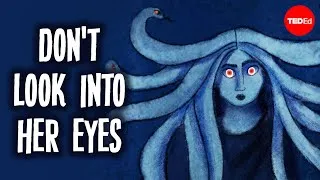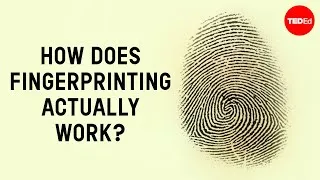请双击下面的英文字幕来播放视频。
翻译人员:
校对人员: Helen Chang
00:06
In the late 1860s, scientists believed
they were on the verge
0
6954
3875
1860年代末,科学家相信
00:10
of uncovering the brain’s biggest secret.
1
10829
3834
他们即将揭开大脑之谜。
00:14
They already knew the brain controlled
the body through electrical impulses.
2
14663
4166
他们已经知道大脑通过
电脉冲控制身体。
00:18
The question was, how did these signals
travel through the body
3
18829
4084
问题是,这些信号是如何
00:22
without changing or degrading?
4
22913
2291
保持不变得穿过身体的?
00:25
It seemed that perfectly transmitting
these impulses
5
25204
3167
为了能完美地传送这些脉冲
00:28
would require them to travel uninterrupted
along some kind of tissue.
6
28371
5000
它们必须不停顿地穿梭于一些组织。
00:33
This idea, called reticular theory,
7
33371
2666
被称为“网状学说”的这一想法
00:36
imagined the nervous system
as a massive web of tissue
8
36037
3667
认为神经系统就像一张组织巨网
00:39
that physically connected
every nerve cell in the body.
9
39704
3375
连接着身体中的每一个神经细胞。
00:43
Reticular theory captivated the field
with its elegant simplicity.
10
43079
4125
网状学说及其简约的理论
征服了学说界。
00:47
But soon, a young artist would cut through
this conjecture,
11
47204
4042
但很快,一位年轻的画家
将会推翻这一推测
00:51
and sketch a bold new vision
of how our brains work.
12
51246
5583
并会重新绘制出我们的大脑
是如何工作的。
00:56
60 years before reticular theory was born,
13
56829
2958
早于“网状学说”60年,
00:59
developments in microscope technology
14
59787
1875
显微镜科技的发展
01:01
revealed cells to be the building blocks
of organic tissue.
15
61662
3751
让我们认识到生物组织基于细胞之上。
01:05
This finding was revolutionary,
16
65413
2458
这一发现是极具变革意义的,
01:07
but early microscopes struggled
to provide additional details.
17
67871
4333
但早期的显微镜却无法提供更多的细节。
01:12
The technology was especially challenging
for researchers studying the brain.
18
72204
4959
在研究大脑这一块,显微镜科技遇到了一些麻烦。
01:17
Soft nervous tissue was
delicate and difficult to work with.
19
77163
4041
软神经组织十分脆弱,
人们很难处理。
01:21
And even when researchers were able
to get it under the microscope,
20
81246
3417
而且即使研究人员成功提取至显微镜下,
01:24
the tissue was so densely packed
it was impossible to see much.
21
84663
5083
这一组织的紧密程度,
让人无法看清细节。
01:29
To improve their view,
22
89746
1375
为了看清细节
01:31
scientists began experimenting
with special staining techniques
23
91121
3667
科学家测试了特殊的染色方法,
01:34
designed to provide clarity
through contrast.
24
94788
3291
通过对比来提高清晰度。
01:38
The most effective came courtesy
of Camillo Golgi in 1873.
25
98079
5167
最成功的来自于卡米洛·高尔基
于1873年得出的方法。
01:43
First, Golgi hardened the brain tissue
with potassium bichromate
26
103246
4167
首先,高尔基将脑部组织浸于重铬酸钾
01:47
to prevent cells from deforming
during handling.
27
107413
3208
防止组织细胞在过程中受到伤害
01:50
Then he doused the tissue
in silver nitrate,
28
110621
3125
然后他再将组织浸于硝酸银中,
01:53
which visibly accumulated in nerve cells.
29
113746
2917
用来在视觉上将神经细胞聚集起来。
01:56
Known as the “black reaction,”
30
116663
1875
这个方法叫做“黑反应”,
01:58
Golgi’s Method finally allowed researchers
to see the entire cell body
31
118538
4500
高尔基的方法让研究者
可以看到整个细胞,
02:03
of what would later be named the neuron.
32
123038
3000
这个细胞后来被命名为神经元。
02:06
The stain even highlighted
the fibrous branches
33
126038
2458
被染色的地方甚至凸显出了
纤维状的分支。
02:08
that shot off from the cell
in different directions.
34
128496
3333
02:11
Images of these branches
became hazy at the ends,
35
131829
3125
这些分支的图像在末端变得模糊,
02:14
making it difficult to determine exactly
how they fit into the larger network.
36
134954
5125
很难确定它们究竟如何融入更大的网络。
02:20
But Golgi concluded that these
branches connected,
37
140079
3334
但是高尔基得出结论说
这些分支都是链接在一起的,
02:23
forming a web of tissue comprising
the entire nervous system.
38
143413
3958
从而建立了一个网状物的组织,
组成了整个神经系统。
02:28
14 years later, a young scientist
and aspiring artist
39
148204
3667
14年后,一个名叫
圣地亚哥·拉蒙-卡哈尔的
02:31
named Santiago Ramón y Cajal
began to build on Golgi’s work.
40
151871
5083
年轻又有抱负的科学家兼艺术家
开始在高尔基的基础上做研究。
02:36
While writing a book
about microscopic imaging,
41
156954
2667
当卡哈尔在写一本关于
微小图像的书的时候,
02:39
he came across a picture of a cell
treated with Golgi’s stain.
42
159621
4333
他无意中看到了一张
高尔基染液细胞的照片。
02:43
Cajal was in awe of its exquisite detail—
both as a scientist and an artist.
43
163954
6625
卡哈尔作为一名科学家和艺术家,
是十分敬畏这样精致的细节的。
02:50
He soon set out to improve
Golgi’s stain even further
44
170579
3375
他很快就进一步改善高尔基的染液,
02:53
and create more detailed references
for his artwork.
45
173954
3417
同时也可以给他的艺术作品
创造更加细节的参考。
02:57
By staining the tissue twice
in a specific time frame,
46
177371
3292
卡哈尔发现当他在一定的时间内
给细胞组织上染两次的话,
03:00
Cajal found he could stain a greater
number of neurons with better resolution.
47
180663
5166
就能看到更多、更清晰的神经元。
03:05
And what these new slides revealed
would upend reticular theory—
48
185829
4709
这样的发现支撑起了网状学说的假设:
03:10
the branches reaching out
from each nerve cell
49
190538
2583
神经细胞的分支
03:13
were not physically connected
to any other tissue.
50
193121
4292
并未和任何别的组织链
实体上接在一起。
03:17
So how were these individual cells
transmitting electrical signals?
51
197413
4375
那么这些独立的细胞是
怎么传递电信号的呢?
03:21
By studying and sketching
them countless times,
52
201788
2708
在无数次的学习和列草稿后,
03:24
Cajal developed a bold, new hypothesis.
53
204496
3750
卡哈尔发展出一个胆大、
全新的假设。
03:28
Instead of electrical signals traveling
uninterrupted across a network of fibers,
54
208246
4417
他提出电信号不是通过一张
不间断的纤维网移动的,
03:32
he proposed that signals were somehow
jumping from cell to cell
55
212663
4166
而是在各个细胞中间跳动的,
03:36
in a linear chain of activation.
56
216829
2917
像连线行的激活一样。
03:39
The idea that electrical signals could
travel this way was completely unheard of
57
219746
4625
当卡哈尔在1889年提出这个
关于电信号想法的时候,
03:44
when Cajal proposed it in 1889.
58
224371
3083
这样的移动方式是前所未闻的。
03:47
However his massive collection of drawings
supported his hypothesis from every angle.
59
227454
5584
但是他的无数张草稿从每一个角度
支撑起了他的假设。
03:53
And in the mid-1900s, electron microscopy
further supported this idea
60
233038
5333
在19年代的中期,电子显微镜
又进一步地证实了这个想法。
03:58
by revealing a membrane
around each nerve cell
61
238371
3125
电子显微镜发现每个神经细胞的
周围都有一层膜,
04:01
keeping it separate from its neighbors.
62
241496
2542
让它和隔壁的细胞分隔开来了。
04:04
This formed the basis
of the “neuron doctrine,”
63
244038
2958
“神经元学说”的基础就这么形成了。
04:06
which proposed the brain’s tissue
was made up of many discrete cells,
64
246996
4167
神经元学说提议脑子里的组织
是由很多独立的细胞构成的,
04:11
instead of one connected tissue.
65
251163
2458
而不是一张有链接的网。
04:14
The neuron doctrine laid the foundation
for modern neuroscience,
66
254454
3667
神经元学说给现代神经系统科学
铺垫了基础,
04:18
and allowed later researchers to discover
that electrical impulses
67
258121
3667
也让后来的研究者发现
当电脉冲在每个神经元中跳动的时候,
04:21
are constantly converted between
chemical and electrical signals
68
261788
3791
04:25
as they travel from neuron to neuron.
69
265579
2667
它们的化学和电信号
是不停变换的。
04:28
Both Golgi and Cajal received
the Nobel Prize
70
268246
3833
高尔基和卡哈尔都拿到了诺贝尔奖,
04:32
for their separate,
but shared discoveries,
71
272079
3125
由于他们独立却又相连的发现。
04:35
and researchers still apply
their theories and methods today.
72
275204
3875
科研者到今天都会一直使用
他们的理论和方法。
04:39
In this way, their legacies remain
connected as discrete elements
73
279704
4459
这样来看的话,他们的传奇
是在一张巨大的知识网里
04:44
in a vast network of knowledge.
74
284163
2916
紧紧相连的两个分离的元素。
New videos
关于本网站
这个网站将向你介绍对学习英语有用的YouTube视频。你将看到来自世界各地的一流教师教授的英语课程。双击每个视频页面上显示的英文字幕,即可从那里播放视频。字幕会随着视频的播放而同步滚动。如果你有任何意见或要求,请使用此联系表与我们联系。







